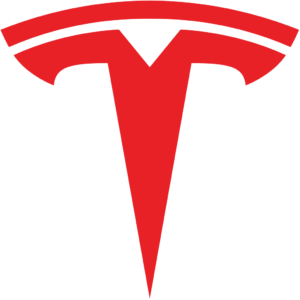How Desperation Stimulates Short-term Rational Thinking…. and Long-term Demise
NOTE: This blog was written in the first two weeks of April, 2020. As such, it cannot and does not anticipate the full effect of the COVID-19 pandemic on the US and global auto industry. Stay tuned…..
In this series of eleven blogs, we will discuss the current situation in Detroit with the traditional “Big 3” – Ford, GM, and Fiat Chrysler (FCAU) – and their upstart rival Tesla. The series will end with specific recommendations as to what the Big 3 must do to survive against Tesla and other electric vehicle manufacturers. The eleven blogs in this series are:
- The Detroit Big 3’s current woes, Part 1
- The Detroit Big 3’s current woes, Part 2
- A brief history of the Big 3’s electric vehicle attempts, Part 1, GM
- A brief history of the Big 3’s electric vehicle attempts, Part 2, Ford
- A brief history of the Big 3’s electric vehicle attempts, Part 3, FCAU and General Big 3 Summary
- What’s so special about Tesla — Part 1, financials and battery performance
- What’s so special about Tesla – Part 2, manufacturing, and cost/time reduction
- What’s so special about Tesla – Part 3, coming Tesla models, etc.
- What’s so special about Tesla – Part 4, Tesla versus emerging competitors
- Why Tesla so successful……..the Company; the Cars
- What’s a poor Big 3 auto company to do now?
What’s so special about Tesla – Part 3, coming Tesla models, etc.
There are three additional Tesla models yet to be in production.
The first of these is Tesla’s Semi truck – a replacement for the typical diesel-powered Class 8 over-the-road tractor that pulls semi-trailers all over the world in the shipment of goods. As of January 2018, Tesla had over 2,000 Semi orders from companies such as UPS (125), Pepsico (100), Anheuser-Busch (40), as well as many international trucking companies, with preliminary prices ranging from $150,000 to $180,000 each. These trucks are likely to come with at least two if not four battery packs, and will be (have to be) charged in one half an hour by two to four connector cables attached to Tesla’s forthcoming “Megachargers”.
Tesla’s Semis have been tested in a variety of road and weather conditions all over the US. A great deal of mileage and learning has accrued, by Tesla engineers as well as by Tesla’s AI-learning-based vehicle management system software. The paradox is that despite customers’ desire to have the Semi and Tesla’s desire for revenue and more satisfied, nay ecstatic, customers, Tesla’s battery production constraints have so far mandated that Tesla not put this truck in production.
The Tesla Semi is a winner on many fronts. There is no way a conventional diesel-powered semi can compete with Tesla‘s innovative Semi. It pays for itself in the first two years of operation just on fuel savings alone! On top of that, the trucks feature Tesla’s Autopilot and will be able to grow into autonomous vehicles as Tesla continues its progress toward the release of its Full Self Driving (FSD) capability.
The second highly desired Tesla vehicle as yet unproduced is Tesla’s Cybertruck. Most recently, Tesla has a backlog of over 622,000 orders for this revolutionary pickup truck design. No other global vehicle manufacturer has such a backlog for any vehicle they offer. Even if 20% of those orders evaporate, that’s still 498,000 orders (and counting). Ballpark $50,000 apiece and that’s a $24.9 billion backlog for Tesla on this one vehicle. Remember, the 498,000 number is our estimate of firm orders from customers, not “orders” from dealers who, in turn, have to push them to the trucking fleets, often at massive discounts. I have written extensively on this exciting vehicle – see my blog #101.
The third Tesla, being created in Tesla Shanghai’s design labs now is their so-called Model 2. This is a low-priced (maybe $20,000 to $25,000?) very small CUV, maybe the size of a Chevy Bolt. Note that it is being designed by Chinese stylists and engineers for the Chinese market, although it’s likely that this basic vehicle could be quickly adapted to the enormous car market in India. This will be a very high-volume car that will have great appeal in the huge Chinese car market. The Model 2 will be designed to cement Tesla in the hearts of Chinese consumers and guarantee their progression into larger and more expensive Tesla products. I suspect this car will be built on a new dedicated manufacturing line in the Giga Shanghai plant complex, starting in 2023.
There is a difference between how Musk/Tesla creates new vehicles compared with the way the Detroit Big 3 do things. Tesla carefully evaluates a market, looking for ways to bring out an innovative high-value product. They build many prototypes, perform extensive testing, then test the public’s reaction to the proposed design and price point. After gauging public reaction and obtaining valuable “customer” feedback via Twitter and the Internet and from 40 to 50 of Tesla enthusiasts’ YouTube channels and their fans (thus from thousands, not from a small carefully not-at-all-randomly-picked “focus group”), Tesla brings out the final product, often modified with additional features and/or improved styling from the originally-viewed prototype as a result of prospective buyer input. During this time period, Tesla has been accumulating direct sales over its Internet ordering process for that vehicle. No advertising, no sales or incentives, no hassle for their customers.
Toggle to the Big 3: The Detroit way of producing a new vehicle is for its design and styling studios to be working away on evolutionary and incremental design changes to existing models. They don’t want to do anything too revolutionary that would upset their current customer base. Great concern is paid to tooling costs and to as much as possible using parts and/or tooling that exists and or that may be easily modified from current designs. There is much testing of potential designs with small focus groups. Their entire development process is packed with extensive “reviews” by engineering and purchasing teams, sales and marketing groups, and finally top executives and their company’s respective Board members. “What do you think of this? What new features do you want in your vehicle?”
Henry Ford was reputed to have once said that if a person in 1908 or so had been asked if he liked the concept of the Model T, the man would have replied: “all I want is a faster horse!” Today’s smartphone never would have been invented if Apple’s Steve Jobs had asked people in 2007 what features they’d wanted in a smartphone.
When Detroit finally has their new models ready, they announce the new models with a huge advertising push telling their dealers and the buying public: “You’re going to love these great new cars or trucks”! Maybe………..but often, not so much. Six months later dealers are often discounting the hell out of many of them to move them off their lots.
The current Trump administration has just rolled back the Federal automotive gas mileage and emission standards required by the ambitious increasingly stricter rules the Obama administration had enacted. At further issue is the right of individual states to set their own auto regulations regarding mileage and ICE emissions, with California leading this fight. So Detroit and other car makers are all caught up in these regulatory wars – not knowing which view will prevail and having to wait years as the various law suits work their way through the our court systems all the way, no doubt, to the US Supreme Court.
Note Tesla’s strategic advantage in this fight. There are not in it! Electric vehicles have no emissions. As Elon would say: “The best fight is no fight!”. Imagine the army of lawyers and lobbyists the ICE car makers are paying in this legal dispute, in addition to the army of engineers, lawyers, and technicians, as well as labs and instrumentation to put every vehicle they make through the CAFÉ certification process. If you produce only electric vehicles, all that overhead cost, organizational complexity, and man hours expended vanishes.
Image Courtesy of Pixabay
Blog #9 in this series is: What’s so special about Tesla – Part 4, Tesla versus emerging competitors
Your feedback in the form of comments or suggestions are welcome in the comment window. Thank you for following my blogs on this site and for participating in my blogging community.




